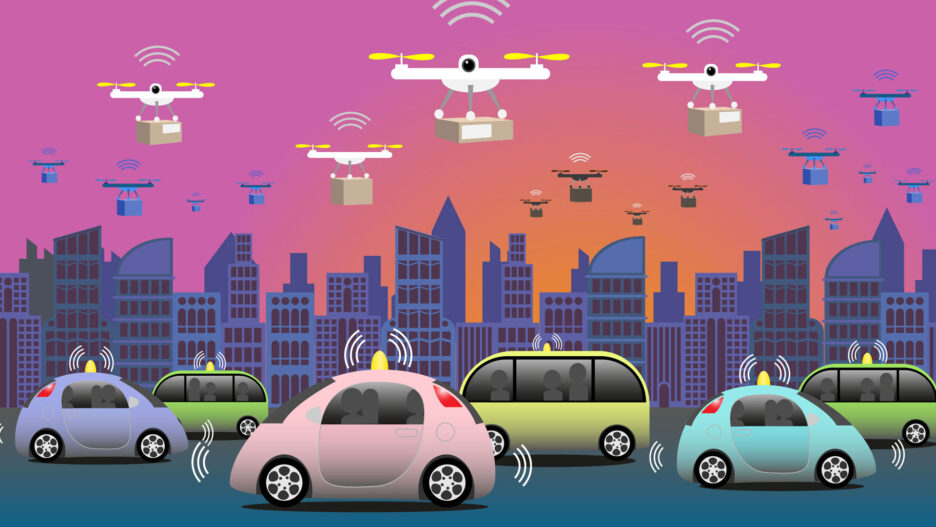What is the Internet of Everything?
We live in a world where there are more things connected to the Internet than there are humans living in the world. In recent years, devices and humans have come closer together than ever before and it has become virtually inevitable to state that the best is yet to come with the introduction of the concept known as the Internet of Everything (IoE).
Many industry experts consider that the Internet of Everything will have a dramatic impact on everything from military, city planning, and healthcare, to environmental efforts, et cetera, and will ultimately re-engineer and redefine the way businesses across different fields operate. But, exactly what is the Internet of Everything?
We’ve certainly heard of it multiple times and it is oftentimes confused with its close relative, the Internet of Things. Thus, to clarify this concept, here’s the definition in the words of John Chambers, former CEO of Cisco, back in 2012: “the Internet of Everything is the intelligent connection of people, process, data, and things on the network. One important enabler of the Internet of Everything is the network intelligence that fuels the manageability, controllability, and scalability required to support this incredible growth in connections.”
Modern applications of the Internet of Everything include digital sensor tools, interfaces used for remote appliances, mobile devices that are both smarter and more heavily connected, industrial machine learning systems, and more.
The principal element of the Internet of Everything is the intelligent connection as it binds all the concepts together into a cohesive system and is what separates it distinctively from the Internet of Things.
In the subsequent section, we’ll go into more detail about the differences between the Internet of Everything vs Internet of Things.
Internet of Everything vs Internet of Things
The Internet of Everything vs Internet of Things debate is common within the industry as the two concepts are closely interrelated. To put it into context, rather than being at war with one another, the Internet of Everything lays down the foundation of the Internet of Things by adding intelligence to orchestrate and unify disparate systems. In essence, the Internet of Everything is comprised of the Internet of Things in concert with human-generated data, business processes, and data structures.
Let’s further examine these two concepts.
Basics of Internet of Things
In an interview for Colliers magazine in 1926, genius Nikola Tesla stated the following: “When wireless is perfectly applied the whole earth will be converted into a huge brain, which in fact it is, all things being particles of a real and rhythmic whole. We shall be able to communicate with one another instantly, irrespective of distance.”
Even back then, the need to connect all things was dreamed of as an imperative solution to communicate seamlessly. Throughout the years, the concept of the Internet of Things has evolved since its early stages up until the term was formally coined by Kevin Ashton in 1999 at a presentation for Procter & Gamble about implementing RFID tags intro every product that was created.
The Internet of Things, as defined by Gartner, “is the network of physical objects that contain embedded technology to communicate and sense or interact with their internal states or the external environment.” These objects or devices have the fundamental characteristic of being imbued with technology, electronics, internet connectivity, and other forms of hardware to communicate and interact with one another and be remotely monitored and controlled.
From smart homes, medical care, transportation, manufacturing, agriculture, energy, and many more, the applications for IoT devices are extensive and ever-growing. These Internet of Things devices can include cars, watches, phones, appliances, medical devices, etc.
The most significant and reliable tendency in IoT is the massive explosion in the number of connected devices that are controlled via the Internet to create data-driven opportunities of direct integration between a physical device and a computer-based system.
The Internet of Things is part of something greater: the Internet of Everything. IoE doesn’t only bring things together, but it also adds people, process, and data into the mix.
Why the Internet of Everything?
Because it holds the promise of comprehensive and powerful systems where machines talk to each other and about each other to execute complex tasks with minimal human intervention or input. Basically, the Internet of Everything will power enough intelligence to transform anything into an intelligent machine.
As defined, there are four pillars that make up the Internet of Everything:
- People: Users who employ connected devices to harness insights about their personal and professional self. Human-generated data includes interests, preferences, work, health, etc. With the Internet of Everything, this data is tied in with enterprise needs to glean insights about the needs and wants of users and ultimately connect people in far more valuable ways.
- Process: How does the right data get processed at the right time by the right person or machine? Through standardized processes where data is filled with meaning in order to enforce actions through the right flow.
- Data: Nowadays, data is generated nonstop and in colossal amounts. Data is meaningless until it is processed and analyzed to obtain insightful information. The key is to figure out the best way of processing and converting data into intelligence to make the best use of it through better, smarter decisions.
- Things: This is where the Internet of Things (IoT) comes in as physical devices and objects connect over the internet with each other to make intelligent decisions. Overall, the interconnectivity of devices across a network generates data that must be collected, summarized, and analyzed effectively.
Already, IoE is generating an unprecedented number of opportunities for organizations, individuals, communities, and countries to gain greater value from networked connections across people, processes, data, and things.
For instance, Cisco predicts that smart cities powered by the Internet of Everything could save significant amounts of money by implementing sensor-based waste management systems that eliminate inefficient collections.
Additionally, IoE is already making waves in the healthcare industry, helping unlock new possibilities for healthcare and connected medicine with the potential to save lives. IoE has given rise to user-enabled health monitoring wearables such as Fitbit and the Apple Watch, which deliver data-driven health insights that could potentially help improve patient care and access if further connected to databases and intelligent networks.
Differences between IoT and IoE
The ultimate and most important difference between the Internet of Things and the Internet of Everything is that IoT is limited, in most cases or very often, to machine-machine connections while IoE binds together people, process, data, and things over an intelligent connection. In comparison, IoT refers only to the networked connection of physical objects (excluding the people and process components of the equation), while IoE combines all four elements in a single, cohesive system.
In essence, the intelligent connection is the cardinal distinction between the two.
To put this into a real-life example, think of a future where even clothing or shoes could be embedded with IoE technology that transmits data to a highly interconnected network of sensors and other imaginable devices with data about a person’s lifestyle, health statistics, itineraries, and more. Then, this data will be processed via an AI system to extract results that can be relevant in different areas such as business, marketing, manufacturing, city traffic, and more.
In essence, IoE takes information from different devices and computers and transforms it into recommended actions.
Cloud computing and AI for Internet of Everything
The reality is that the Internet of Everything is getting smarter by the second and companies should take advantage and incorporate artificial intelligence (AI), specifically machine learning, and cloud-based computing into IoE applications to unearth insights in data.
Artificial intelligence is being applied across different technologies so it is only natural that it is revolutionizing its way through the Internet of Everything and the Internet of Things. Companies are crafting strategies that take into consideration the potential of integrating AI capabilities, such as machine learning analytics, into cloud-based IoE and IoT projects. The value of taking advantage of AI in the context of IoE comes from the speed with which it yields insights from data by automatically identifying patterns and anomalies in data generated from sensors and devices. Soon enough, it will be virtually unheard of to find an IoE or IoT cloud-based application that doesn’t make some use of AI.
Based on Gartner’s top 10 strategic IoE/IoT technologies and trends that will drive digital business innovation since 2018 through 2023, the number 1 spot is allotted to none other than Artificial Intelligence. According to Nick Jones, research vice president at Gartner, “Data is the fuel that powers the IoT and the organization’s ability to derive meaning from it will define their long term success. AI will be applied to a wide range of IoT information, including video, still images, speech, network traffic activity, and sensor data.”
As AI continues to weave its way into IoE and IoT applications, IoE smart systems generate monumental amounts of data, oftentimes referred to as Big Data, that simply cannot be processed through traditional data processing algorithms and applications. Such quantities of data pose the challenges of insufficient storage, processing, and visualization capabilities. To alleviate these challenges, cloud computing makes the task of handling large volumes of data easy and provides the devices with the necessary resources on-demand.
Conclusion
General Electric published a report where it was stated that the connection of networks and machines could yield a $10-$15 Trillion addition to the global gross domestic product, which only further proves that the potential is infinite with the Internet of Everything. According to Business Insider, businesses will invest over $6 trillion in this philosophy between 2015 and 2020, and this investment will yield a $12.6 trillion return over the following decade.
The Internet of Everything is based on the idea that machines become smarter as they receive more and more streams of data along with expanding network opportunities, leaving behind the restrictions of connectivity to a handful of devices. The connection that IoE brings leads to automation and advanced smart applications.
According to senior technology consultant Tim Bajarin for Time magazine, “all companies will create products and services that fit into a world of smarter devices, services, and ecosystems. While there will surely be some variants on this theme, the bottom line is that the Internet of Everything is the next big thing for tech and pretty much all industries, as they’ll all want to be part of this revolution.”
As we can clearly see, the Internet of Everything is the next major step in delivering and upholding the promise of making the world a truly connected place. As IoE takes center stage, it is expected to shift the way businesses operate, completely reinventing processes, models, and strategies, all in the path of transforming the way critical decision-making is orchestrated.





